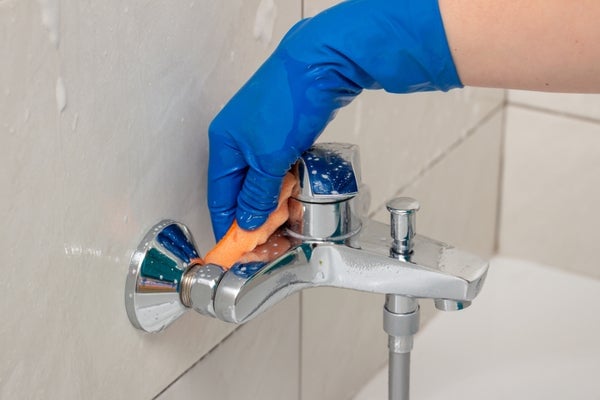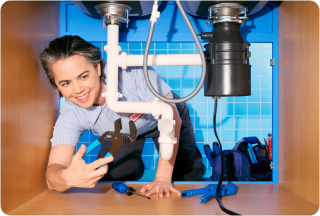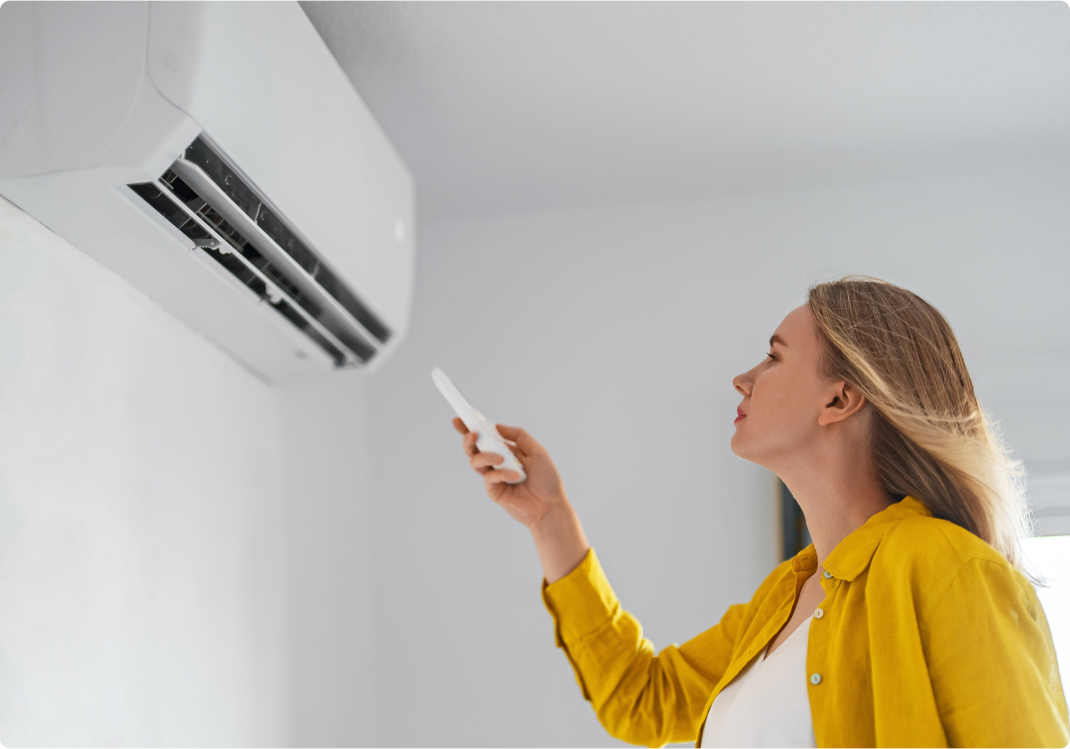Mold and mildew in the bathroom, basement, or anywhere in the house is never a welcome sight for a homeowner. In addition to being a nuisance and an eyesore, mold, and mildew can also be toxic and expensive to remove if it covers a large area.
How do you tell the difference between regular or black mold vs. mildew? American Home Shield® is here with some tips on understanding mildew vs. mold.
What is the Difference Between Mildew vs. Mold?
Mildew is common in damp areas like the bathroom, basement, or kitchen. However, mildew can turn into mold, which can then become a huge problem. Mildew is typically the precursor for mold, and its relationship to your health can be relatively minor compared to mold. According to the CDC, molds can cause cold-like symptoms, skin irritations, and even infections in your lungs, which could be deadly.
Besides being less toxic, mildew is also easier to get rid of than mold because it’s a younger form of fungi. It usually sticks to the surface of the infected area and can be removed with a bleach and water mixture or a mildew cleaner. Mold, on the other hand, burrows and spreads, and it can get in your walls and other areas you can't reach. This is why a professional inspection may be needed; black mold removal is doable, but if it takes up a large area, it’s best left to the professionals.
The mold vs. mildew smells are similar; they both have a strong, musty odor. However, the mildew smell is generally not as potent as mold.
Here is a chart comparing mildew vs. mold:
|
Fungus |
Texture |
Color |
|
Mold: |
Fuzzy or slimy, usually raised |
Mold can be an array of colors depending on its food source. It can be dark green, gray, or black. It can also have bright colors. |
|
Mildew: |
Flat, dry, and powdery |
White, gray, yellow, or brown |
How to Remove Mold and Mildew
There are different methods for removing mold and mildew, depending on the surface.
Walls: The removal process for mold vs. mildew on walls is the same. Mix one cup of chlorine bleach with one gallon of warm water and lightly scrub the affected area. Let the solution dry for 10 minutes, then repeat the process at least two more times to ensure all mildew or mold has been removed.
Bathroom or kitchen tile: Kitchen or bathroom mold vs. mildew removal can be done with a commercial cleaner or with a mix of one-part bleach to two parts warm water. Spray, scrub, and rinse the area at least once to remove the mold. Here are tips for dealing with mold under the sink.
Fabric: It’s never fun to identify mildew vs. mold on clothes, but both have the same removal process. When cleaning certain fabrics that have mold or mildew growth, take them outside to prevent any spreading of spores. If the material is still wet, let it sit in the sun until dry. Next, use a brush to remove as much mold and mildew as possible. For any remaining stains, use the bleach and water method of removal. If the piece is washer friendly, send it through a cycle after removing the mildew with bleach.
Clothing: In many cases, your best bet would be to throw away the piece of clothing. Unless it’s a treasured item, the threat of spreading more mold spores just isn’t worth it. Using gloves, place the clothes in trash bags, seal them tightly, and discard them.
Wood furniture: The removal process for mildew vs. mold on wood is the same. First, mix a solution of distilled vinegar or bleach with water. Use a nonabrasive sponge or brush to scrub the affected area, then wipe it clean with a rag or towel. If the fungi have gotten deep into the wood, you may have to sand down the area and scrub again.
When cleaning up mold in your home, you should always assume it’s toxic. Once you start cleaning, the spores can spread, so make sure you wear gloves, a respirator that protects against mold, and goggles. Once you’re done, you should launder the clothes you were wearing and clean your shoes to avoid spreading the spores throughout your home.
Consider these eco-friendly cleaning products when tackling mold: Cleaning Products




